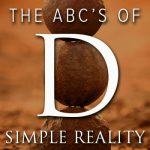It is normal that controversy will roil around the topic of supernatural agency or disembodied sources of esoteric information or divine wisdom. This is all much ado about almost nothing as we shall see, but first, a little perspective.
The so-called phenomenon of “channeling” is completely natural and has therefore had an undeniable presence throughout human history. Roger Walsh, a professor at the University of California at Irvine, says “it seems pretty clear that some of the Bible was produced through channeling, as well as part of the Koran. In Judaism and in Buddhism there have been scores of mystics who produced works by the process of inner dictation, and many Indian and Tibetan texts originated this way. The Greek oracle at Delphi—actually a series of priestesses who supposedly spoke on behalf of the god Apollo—stayed in business for nine hundred years.”[i]
The Simple Reality Project has found A Course in Miracles channeled by Helen Schucman, Seth channeled by Jane Roberts in The Nature of Personal Reality (1975), and Edgar Cayce who delivered more than 16,000 health and past life “readings” while in a trance state, to contain many profound insights that are valuable in distinguishing illusion from reality. Choosing which sources to use from the hundreds of such so-called supernatural sources was actually quite easy.
But first, let’s pay some respect to those for whom the dilemma is not so straightforward. Many people are puzzled by the challenge of separating messages from a transcendent realm from the wisdom that might be coming from one’s own subconscious. Am I being asked to be a channel or am I hallucinating? The key is to focus on the content, have a simple and pragmatic source of principles with which to compare that content, trust your own inner wisdom and have a plan for self-transformation that includes a simple and effective practice that delivers immediate results.
D. Patrick Miller acknowledges the confusion that many of us have when confronted with the latest book or guru showing up on our screens. It is natural to want to believe the “good news.”
“But it does appear that the best interpretation of spiritual messages follows the direction of spiritual growth itself—toward self-confrontation and humility and away from presumptions of self-importance.”[ii] Without experiencing the growing power of the True self (the ability to respond) and the fading influence of the false self (fewer and fewer reactions), no outside source of guidance will be of any value.
[i] Miller, D. Patrick. “Taking Divine Dictation.” Intuition Magazine. October 1977, p. 28.
[ii] Ibid., p. 27.



